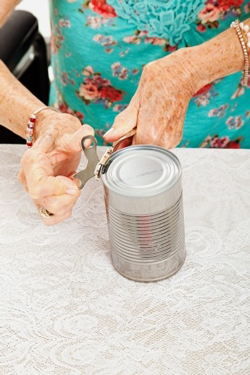 Arthritis is one of the most common conditions affecting seniors in the United States, but it is also one of the most mysterious. According to the Society for Women’s Health Research, arthritis complicates life for about 70 million people in the United States, yet recent polls show that there are even odds that someone just beginning to feel the effects of the condition would be able to recognize their symptoms as arthritis. A not inconsiderable number of Americans (about 15% of poll respondents) know nothing at all about the disease.
Arthritis is one of the most common conditions affecting seniors in the United States, but it is also one of the most mysterious. According to the Society for Women’s Health Research, arthritis complicates life for about 70 million people in the United States, yet recent polls show that there are even odds that someone just beginning to feel the effects of the condition would be able to recognize their symptoms as arthritis. A not inconsiderable number of Americans (about 15% of poll respondents) know nothing at all about the disease.
The first step towards uncovering the secrets of living well with arthritis is to learn everything you can about the condition—from its first symptoms to daily treatment.
While arthritis is one of the main causes of disability in people over the age of 55, it can strike at any age, so it’s critical to recognize the symptoms so that your doctor can advise you on treatment as soon as possible.
- Ongoing joint pain
- Joint stiffness
- Joint swelling
- A joint that is tender to the touch
- Difficulty moving or using a joint
- Warmth or redness in a joint
If any one of these symptoms last for more than two weeks, contact your doctor.
Let Your Medical Team Be Arthritis Detectives.
Your medical team is a walking treasure trove of tricks for living well with arthritis, a condition that can grow worse without professional medical treatment. Through a comprehensive medical exam, blood tests and x-rays, your doctor can determine if you have one of the more than 100 types of arthritis.
Once you know whether you have osteoarthritis, rheumatoid arthritis, or another joint problem, your medical team can help you develop an arsenal of tools for overcoming pain and stiffness brought on by the disease.
Living well with arthritis starts by assembling a great medical team (which may include your primary physician, a rheumatologist that specializes in diseases of the joint, and a physical or occupational therapist) then fully utilizing the knowledge and experience they have to offer. Uncover the secrets medical treatment has to offer by fully participating in therapy: see your doctor regularly, complete all physical therapy programs and take your medications as directed.
Behold the Power of Arthritis Medications.
The right OTC and prescription regimen can work to ease pain, reduce swelling and inflammation, and even slow down damage to your joints. Your doctor will prescribe or suggest medication depending on which type of arthritis you have.
These medications can include:
- Painkillers
- Creams and ointments
- Non-steroidal anti-inflammatory drugs, or NSAIDs
- Corticosteroids and injections
- Anti-rheumatic drugs
These medications make it easier for you to move around and exercise without pain and stiffness. Which is a good think considering…
Exercise may be the greatest arthritis-fighting tool in your arsenal.
While it may seem counter-intuitive—treating stiff and sore joints by forcing them to move—exercise actually decreases pain and improves mobility in your joints and muscles. It also straightens your posture in a way that takes pressure off your arthritic joints. Additionally, physical activity improves your overall health and quality of life by reducing stress, keeping you at a healthy weight, helps you sleep, and strengthens your heart, lungs, and bones.
Arthritis Products Improve Senior Life.
Several products now make senior life easier in the face of arthritis. A push-button pill planner makes it easier to handle medications while Duracell’s Easytab makes handling hearing aid batteries a breeze. Product manufacturers reveal several gadgets to make gardening easier, such as Fiskars’ Powergear Pruners and the Flexon Guard-n-Grip.
You can overcome the symptoms of arthritis by uncovering the secrets of living well with this condition. Once your doctor determines the source of your arthritis pain, you can learn tips, tricks, medications and treatments that make your life easier.












